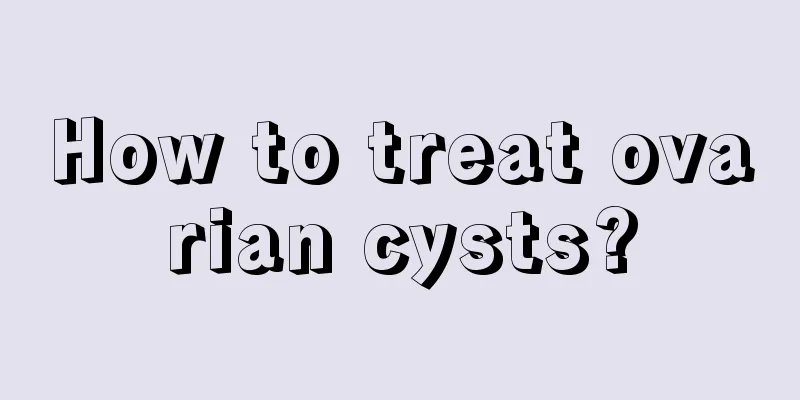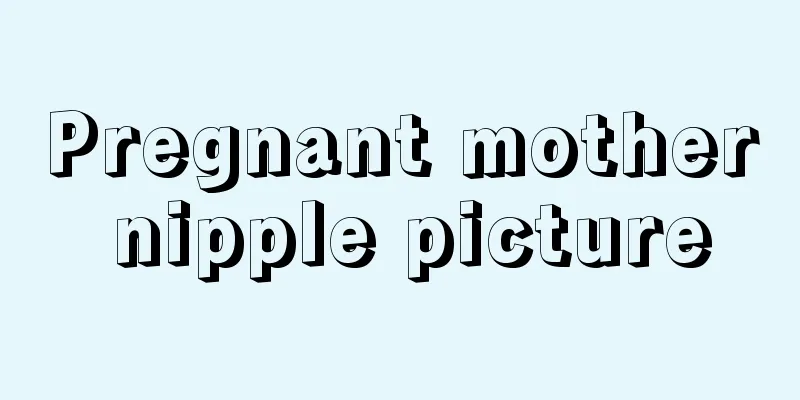How to treat ovarian cysts?

|
Ovarian cysts are considered to be a relatively serious gynecological disease, but many patients do not notice it in the early stages of the disease. They may think that symptoms such as abnormal leucorrhea are just vaginal inflammation, which will delay treatment. In fact, it is not too difficult to cure ovarian cysts. The following editor will focus on introducing the specific treatment methods, which you can use as a reference. 1. Surgical treatment of benign ovarian cysts. (1) Salpingo-oophorectomy: Older patients (over 45 years old) or postmenopausal patients can undergo unilateral or bilateral salpingo-oophorectomy. It is worth noting that in the surgical treatment of larger ovarian cysts, the size of the incision should be ignored and complete resection is preferred to avoid breaking the patient's pulse and allowing the contents to spill into the abdominal cavity or incision. During the operation, attention should be paid to the rapid changes in abdominal pressure that cause changes in the patient's pulse, breathing, and blood pressure. When necessary, infusion or blood transfusion, oxygen supply should be accelerated, and early detection of acute gastric dilatation, paralytic intestinal obstruction, and the resulting water and electrolyte imbalance should be prevented. (2) Ovarian cystectomy: This procedure is often used in young patients, especially premenopausal patients, while preserving normal ovarian tissue as much as possible. 2. Surgical treatment of malignant ovarian cysts. (1) Most patients are in the advanced stage when they seek medical treatment, so every effort should be made to remove the primary cyst and any visible pelvic and abdominal metastases. Because malignant ovarian cysts are often adhered or infiltrated with the uterus and adnexa, and are closely attached to the pelvic peritoneum, the uterus and tumor are often removed in one piece along with the pelvic peritoneum in a rolling carpet style, such as omentectomy, partial intestinal resection, partial bladder and ureter resection. (2) Consider placing a catheter in the peritoneal cavity to facilitate the postoperative intraperitoneal injection of chemotherapy drugs. Generally speaking, the treatment methods of ovarian cysts are generally divided into the above types. After a detailed examination, the patient can choose the appropriate method for treatment, so that the purpose of targeted treatment can be achieved. At the same time, the editor recommends that all patients insist on follow-up examinations after treatment, preferably once a week. |
<<: How can gynecological disease cervical erosion be cured?
>>: How to treat moderate cervical erosion?
Recommend
What are the symptoms of anemia during menstruation?
Anemia is one of the diseases that poses the grea...
What to do if the nipple is cracked
The breast is a particularly delicate area on the...
Why is my period delayed by 10 days?
Many friends will feel nervous when their period ...
What if I don't have my period after giving birth?
From the first moment a child comes into this wor...
How to exercise to tighten your vagina
I believe that every mother who has given birth w...
What to do if you have cold stomach and cold uterus?
Most patients with stomach cold often suffer from...
Why does bleeding continue after a normal birth?
Many women will experience some bleeding after gi...
Can pregnant women eat stone pollen?
The main component of stone flower is calcium bic...
What to do if you have a stuffy nose? What are the causes of a stuffy nose?
Many people often have nasal congestion in their ...
The left lower abdomen of women is higher than the right lower abdomen
Every woman pays attention to her health, especia...
What can a hysteroscopy check?
The uterus is an important part of the female rep...
I found out I was pregnant after taking a chest X-ray.
Key reminder: In daily life, some women need to t...
Taking diet pills to lose weight? Be careful
Author: Wang Fang, Chief Physician, Beijing Hospi...
Brown discharge after period
Women usually have normal secretions. But if dark...
Pictures of pregnancy urine
After a woman becomes pregnant, her abdomen becom...









